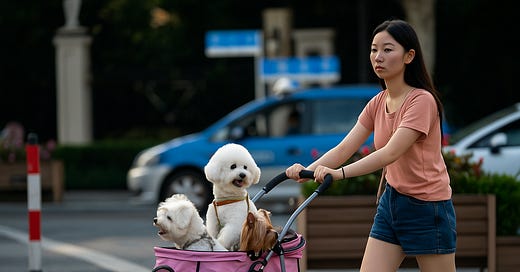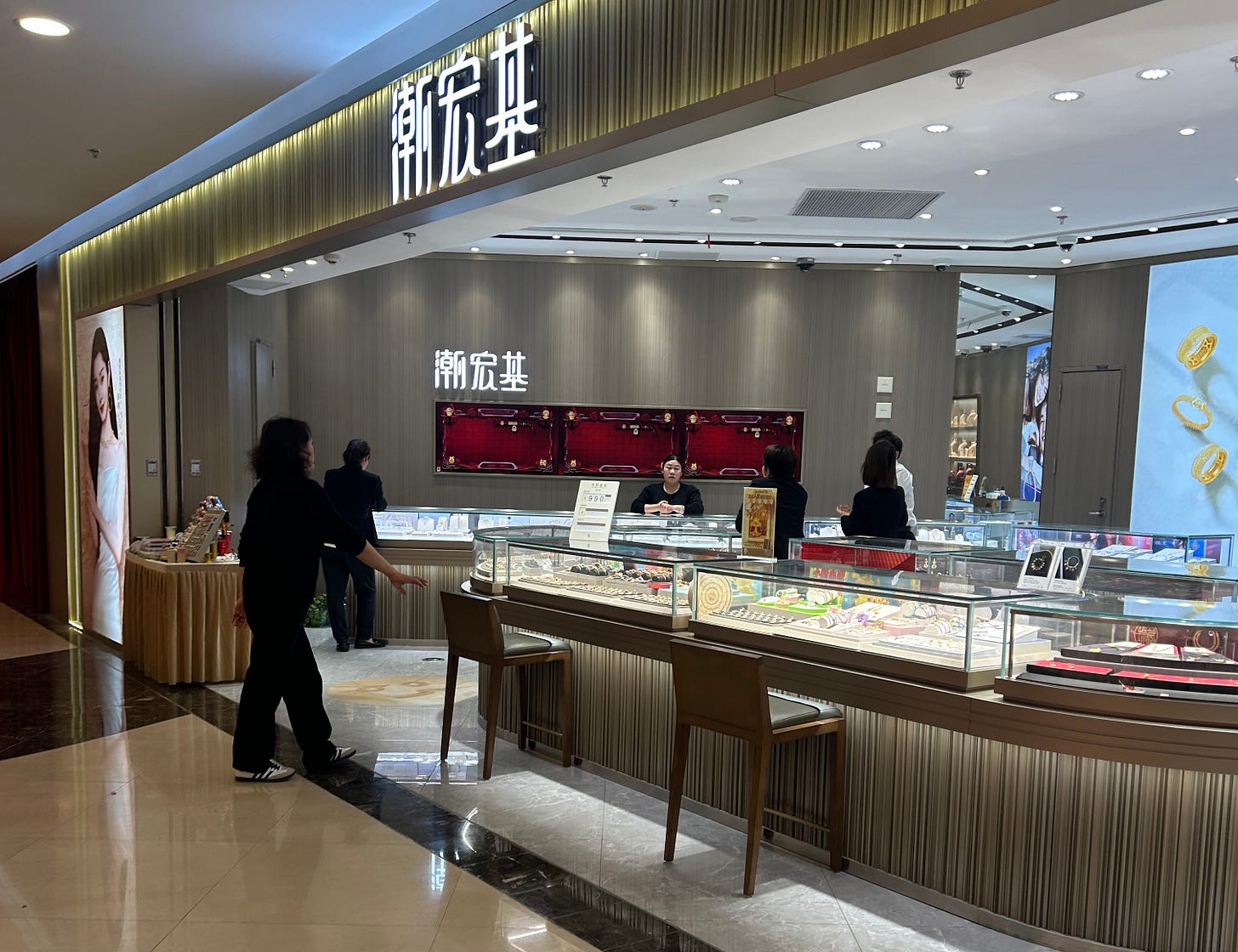The Rise of China’s Pet Industry: Market Trends, Top Companies, and Investment Insights
From export OEMs to billion-yuan local brands
The Cat Stroller and the Death Zone - Notes from a Changing China
Whenever I walk the streets these days in China—or through one of the many shopping malls—I find it oddly satisfying to just watch what’s changing. You see businesses evolve, decay, reappear in different form. It’s one of the only places where you can literally see a consumer trend take shape, long before it shows up in an earnings call or a 13F holdings report.
These malls go through waves. When I first moved here, they were full of international fashion chains and luxury watch and handbag brands. Now, the ground floor is dominated by domestic electric vehicle makers and caffeinated drink chains. Coffee shops, tea shops—everywhere. I promised I’d write something about this tea and coffee madness, and I will. I’m onto this. It’s been months of research already, and I’m still learning more. So stay with me.
Then you enter what I call the Death Zone. The lights are still on, technically. But life? Not so much. Fashion chains, luxury makeup counters, and high-end jewelry and accessory stores. The only thing alive is the sales staff, grouped together like penguins in a snowstorm (a.k.a. a fully cranked air conditioner), keeping warm by standing close and scrolling through Douyin and Xiaohongshu.
But recently, something new caught my eye.
China’s Next Obsession Has Whiskers
Pet stores. Pet grooming. Pet hostels for when the owners are away on business trips. And not the old-school kind with a single goldfish gasping in a plastic tank next to a half-empty bag of hamster food. These are full-blown, high-concept boutiques. Cats in display boxes, coordinated outfits for your dog, cat strollers, and enough premium jerky to make you question your own diet.
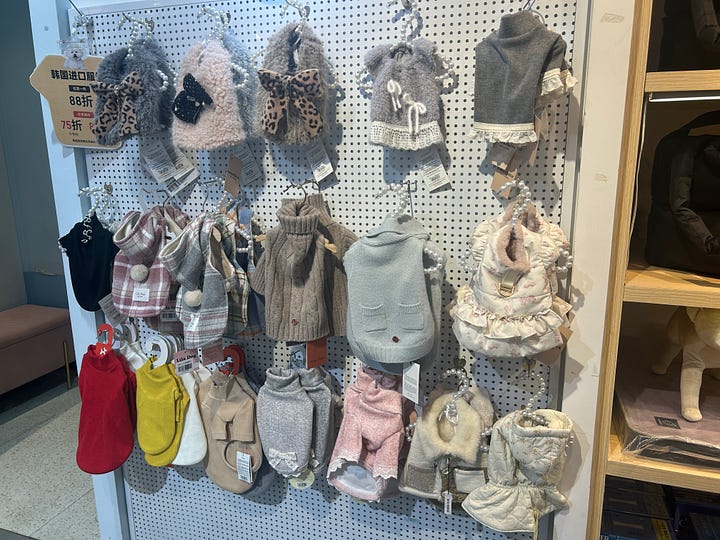
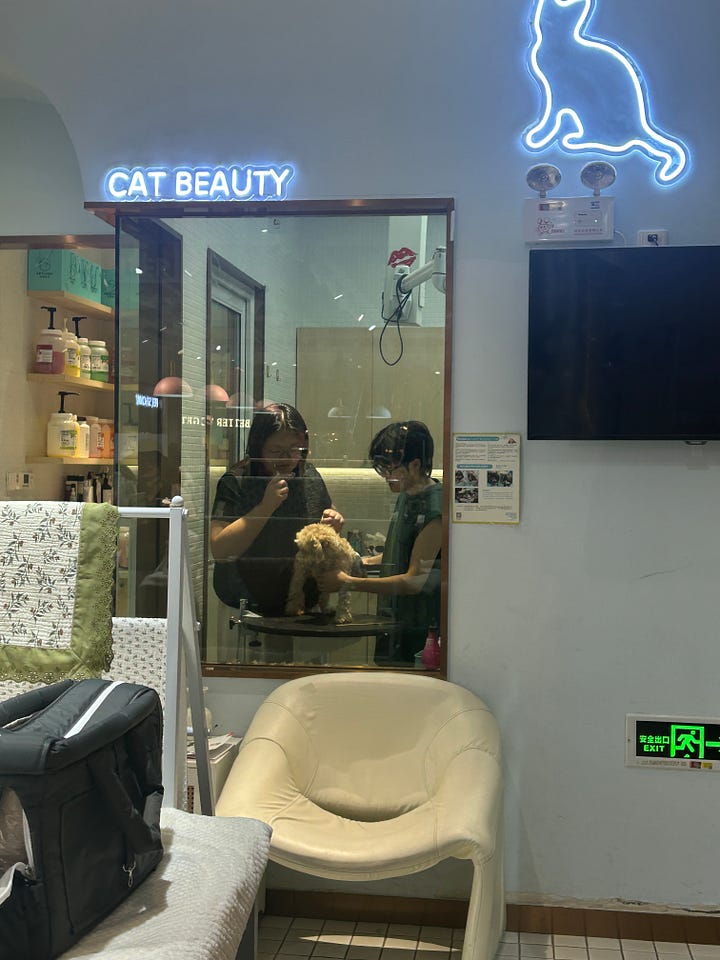
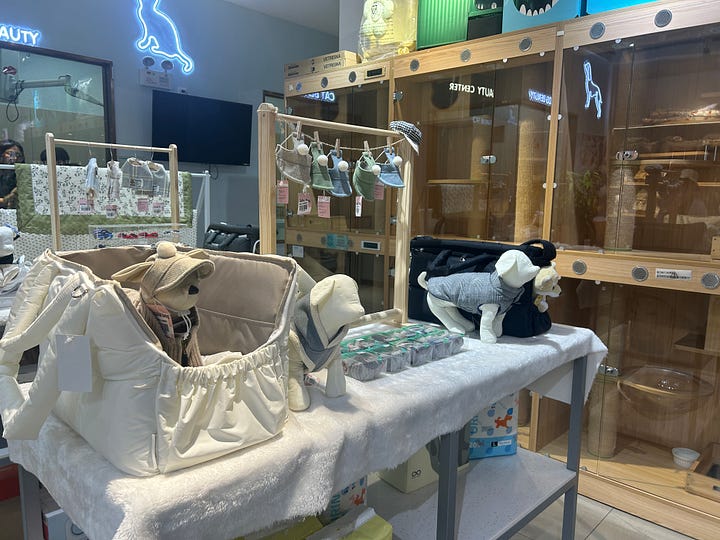
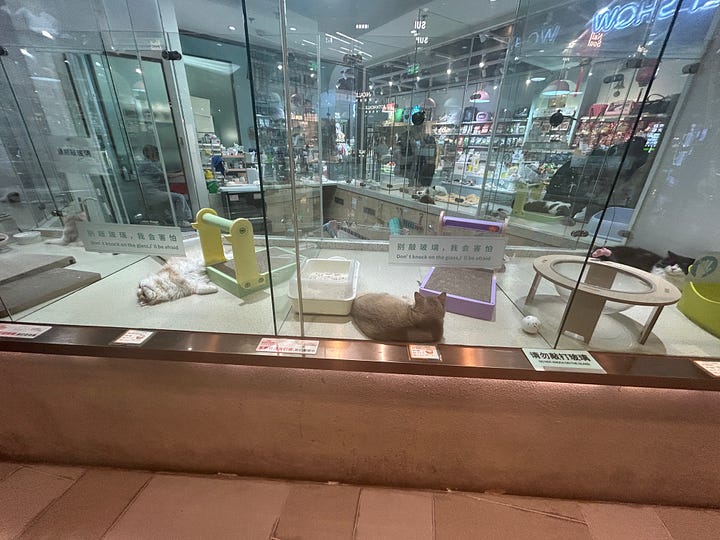
They even have a spa for cats, mint chews for fresh breath—everything short of a retirement plan. Honestly, in my next life, I want to be reborn as a cat. Watching that kind of luxury really makes you reconsider every decision you’ve ever made.
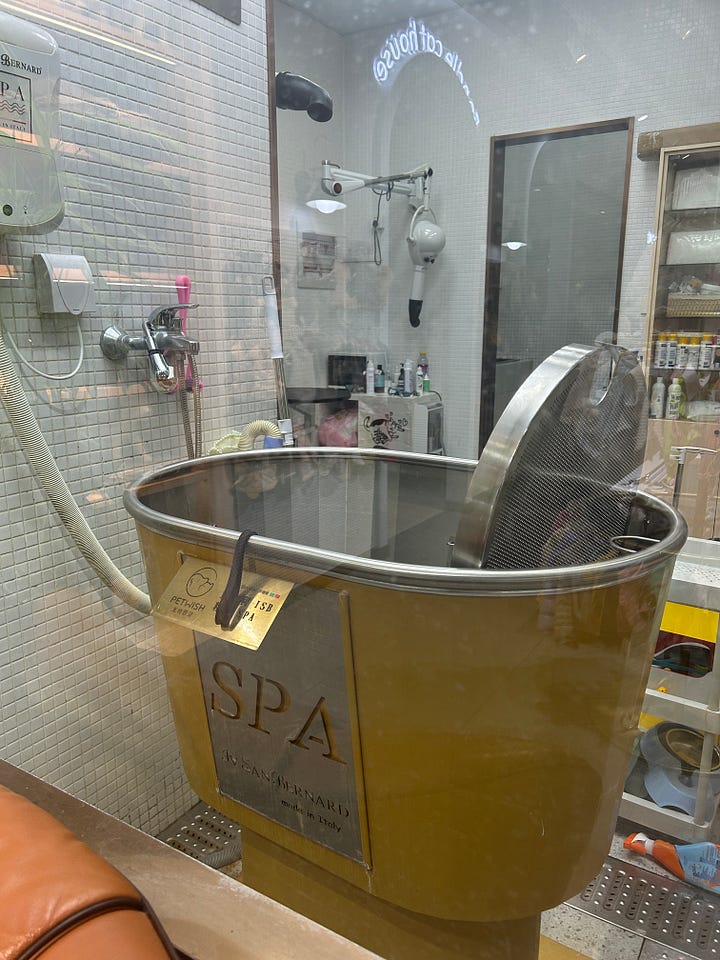
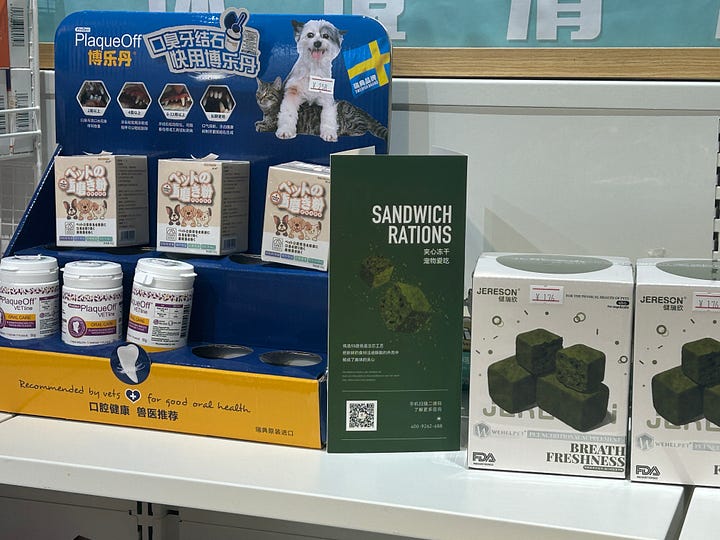
Recently one of our secretaries quit her job—to reopen her pet grooming and boarding shop. It was something she had to shut down during COVID, but now business is so good she left us without hesitation. Apparently, she prefers working with cats and dogs over working with me. I understand. I didn’t take it personally.
And yes, there are cat cafés. So many of them. People sip overpriced lattes while a feline silently judges them from a shelf. The cat ignores them. They smile and take photos.
This is classic China. Once something catches on, it spreads like wildfire. And for now, what’s catching on is pets. Not just as animals, but as family members and miniature consumers with accessories, routines, and food tailored to every imaginable dietary quirk these little creatures supposedly need—from grain-free to single-protein to freeze-dried yak lung.
Pets are family members
A while ago I was waiting in the elevator of our building for a middle-aged woman to enter. I heard her shouting “儿子!儿子!”—the Chinese word for “son.” Naturally, I was expecting to see a toddler walk in. Instead, her golden retriever trotted into the elevator.
It was then when I realized, Pets are no longer just animals. They’ve been promoted—quietly but thoroughly—to full family members. I’ve spoken with many people, especially among the younger generation, and it’s striking how seriously pet-related decisions are treated. Food plans, medical checkups, insurance, even apartment layouts—everything is discussed with the same weight older generations might give to a child’s education.
Before moving to Shanghai, I sold my apartment in Beijing to a lovely young couple. The compound is zoned for a top-ranked school, which I assumed was part of their interest. I pointed it out. They shook their heads and said, “We’re not going to have kids. But the view is nice—our cat will enjoy it while we’re at work.”
Pets aren’t just a lifestyle fad. It’s a serious consumer trend—and one that’s already reshaping the numbers.
Let’s talk about the business of pets in China.
In the rest of this article, I’ll examine the key trends shaping China’s pet industry—how the market is evolving, where the growth is coming from, and which companies are best positioned to benefit. I’ll also take a closer look at some of the major players, their strategies, and what the numbers reveal.
This part is only available to paying subscribers. If you’d like access to the full analysis—and future pieces like this—I’d be glad to have you onboard.
Keep reading with a 7-day free trial
Subscribe to The Great Wall Street - Investing in China to keep reading this post and get 7 days of free access to the full post archives.

